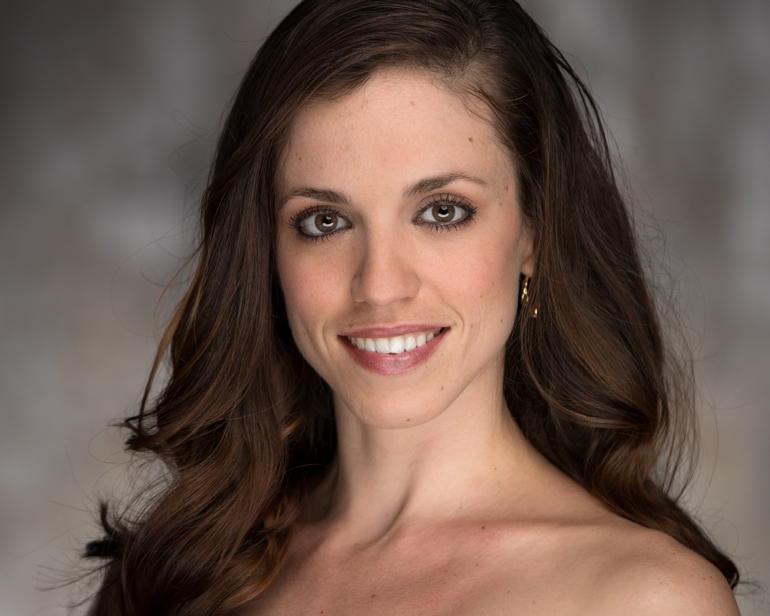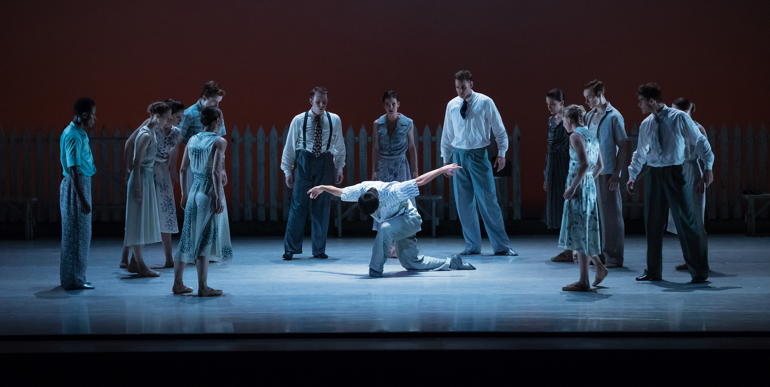Life contains moments in which we are forced to steady our balance, draw a breath, and take a flying leap. Or as we say in ballet, a grand jeté. By her mid-twenties, Amaya Rodriguez had established a solid career as principal dancer of the National Ballet of Cuba, where she was the company’s top ballerina and among the last generation of dancers to study with legendary Founding Director Alicia Alonso.

Amaya Rodriguez (Photo Credit: Brett Pruitt & East Market Studios)
For her part, Amaya had treasured every moment she was able to spend with the celebrated dancer/choreographer, who died in 2019 at the age of 98. She had embarked on extensive tours of Europe, the Americas, the Middle East, and Australia with the company, had won medals at home and abroad, and had danced all the major classical roles: from Giselle to Cinderella, Coppélia to Dulcinea, Medora (Le Corsaire) to Aurora (The Sleeping Beauty), from Sugar Plum Fairy to Odette/Odile (Swan Lake).
But the ballerina with the limpid lines and celebrated pirouettes yearned for new challenges, and she possessed the one quality necessary to make enormous life changes: mettle. She also had the gumption to summon it when necessary.
“Cuban National Ballet has been completely, 100 percent focused on classical ballet,” said Amaya, who came here in 2016 to join the Kansas City Ballet. “When I decided to leave Cuba, I was 27 years old, and I saw that I was never going to be able to do neoclassical or contemporary ballets.”
Throughout her life as a dancer, which began at age nine, Amaya had watched touring companies present the full range of choreography being performed today, so she knew what was out there. She also knew that in Cuba she would never have the option of dancing these works.
“This was a step in my life when I had to push myself to do something different,” she said. (Meanwhile it appears that renewal is afoot at the National Ballet: Last year the new director, Viengsay Valdés, said she was hoping to modernize.)

One of Amaya Rodriguez’ first experiences dancing with Kansas City Ballet was in Val Caniparoli’s The Lottery, based on the story by Shirley Jackson. (Photo Credit: Brett Pruitt & East Market Studios)

Amaya Rodriguez and Liang Fu danced Sugar Plum Fairy and Cavalier in the 2016 production of Devon Carney’s The Nutcracker. (Photo Credit: Brett Pruitt & East Market Studios)
In 2015, Amaya and her husband, fellow Dancer Enrique Fuente, were both offered contracts to dance with Ballet de Monterrey in Mexico and were thus able to leave Cuba legally: to perform for a public that has, during the years, grown enamored with the powerful dancers from “Alicia’s island.”
But not long after moving to Mexico, they realized that The United States should be their next step. After a few months in Florida, where Enrique’s mother has a home, Kansas City Ballet Artistic Director Devon Carney offered Amaya a contract for 2016-2017. Since then, she has become a charismatic addition to the company.
Leaving Cuba was wistful for the couple, and for a number of reasons: not least of which was Alicia herself, a sort of heroine in her own right. Even as an octogenarian and virtually blind, “she was with us in the studio every day,” Amaya said. “Even on rainy days, hot days, she was always there.”
With an assistant by her side calling out what she couldn’t discern with her own ears, Alicia would give corrections with astounding accuracy. “Every time she clapped, you knew you did something wrong,” Amaya said. “She wasn’t able to see us… but she would know. It was some kind of magic. If she heard that my steps were off, she would be clapping her hands saying, stay with the music!”
Amaya’s first seasons in Kansas City represented quite a transition. “In America, you have to be able to do everything. I had to learn how to move my body differently, because if I decided to stay here, I had to adapt myself for a new life. … But I pushed myself day by day, and it has gone very well.”
During seven seasons, Amaya has danced in everything from Val Caniparoli’s The Lottery to Septime Weber’s The Wizard of Oz, from Balanchine’s Diamonds to Michael Pink’s Dracula: in addition to a number of classical roles, most notably that of Odette/Odile.
Amanda is happy to have mastered the classical idiom. She feels honored to have achieved this with a legendary dancer and proud to be able to bring this unique legacy to the world.

Amaya Rodriguez and Liang Fu danced Sugar Plum Fairy and Her Cavalier in the 2016 production of Devon Carney’s The Nutcracker. (Photo Credit: Brett Pruitt & East Market Studios)
At the same time, she is happy to free herself of its strictures, and to use her classical skills toward building something fresh. “If you know ballet, you can do anything else,” she said, “with a coach’s help, a director’s help, a choreographer’s help.” Initially, she struggled to break out of the classical mold, “and now here I am, doing every single piece, every single kind of choreography that comes to us.”
She quickly began to feel a sense of family at Kansas City Ballet, and in our community: comfortable enough that she and her husband began building a family (two kids so far), even as she continues to dance when possible. “In Kansas City, I have found my home: My place to make a family and enjoy my life and career. I feel great in this city, and in this Company: like I have found a place to live in peace.”
Featured in the March 18, 2023 issue of The Independent.
By Paul Horsley